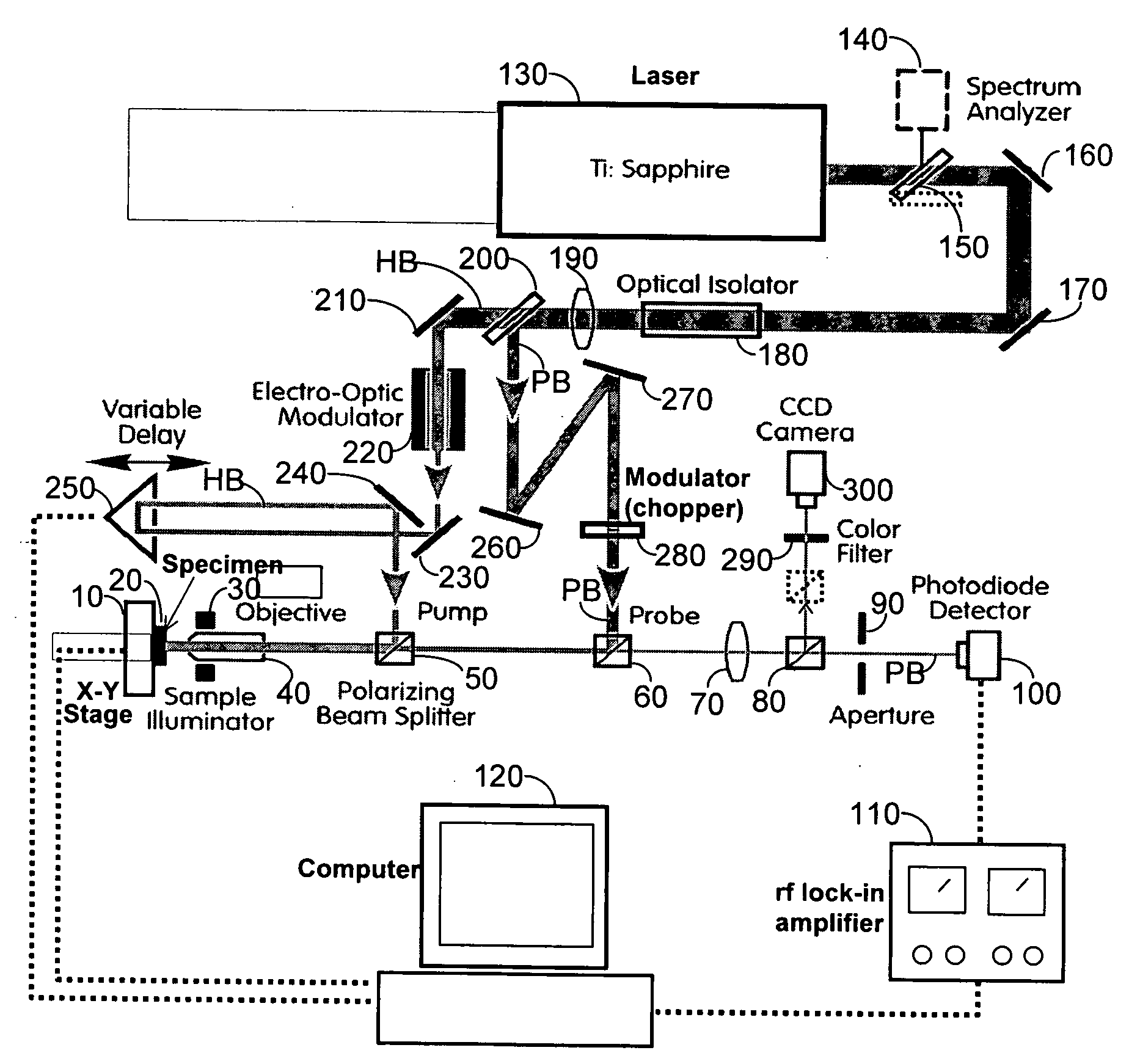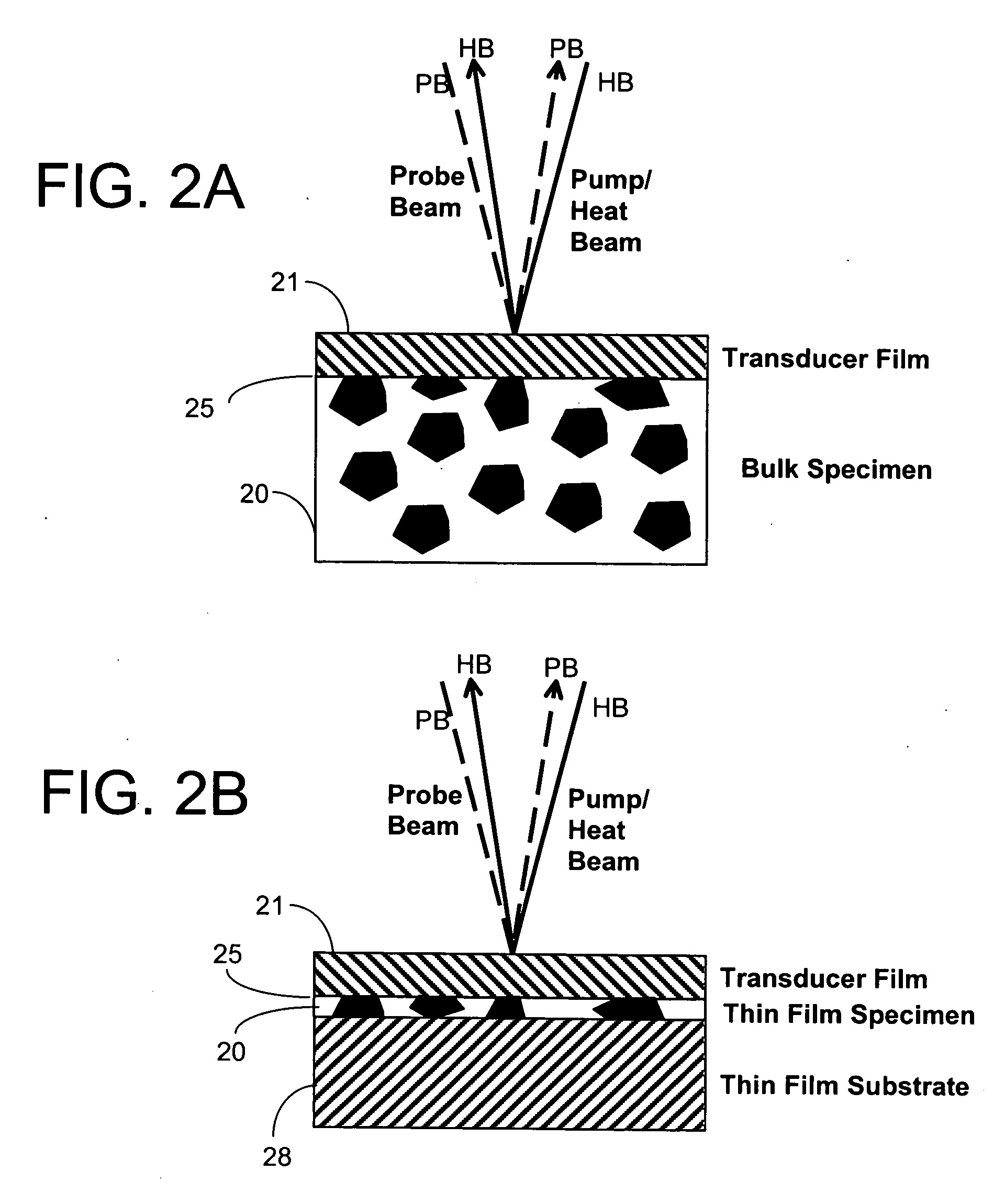Apparatus and method for measuring thermal conductivity
a technology of thermal conductivity and apparatus, applied in the field of apparatus and methods for measuring the thermal conductivity of specimens, can solve the problems of only measuring the average value of disk-shaped specimens, unable to meet the requirements of thermal conductivity measurement of regions or features, and the method may work only on low thermal conductivity materials, etc., to achieve accurate measurement of thermal conductivity, reduce lateral heat flow, and improve the effect of accuracy
- Summary
- Abstract
- Description
- Claims
- Application Information
AI Technical Summary
Benefits of technology
Problems solved by technology
Method used
Image
Examples
Embodiment Construction
[0017] For the purposes of promoting an understanding of the invention, reference will now be made to some preferred embodiments of the present invention as illustrated in FIGS. 1 and 2, and specific language used to describe the same. The terminology used herein is for the purpose of description, not limitation. Specific components and their functional details disclosed herein are not to be interpreted as limiting, but merely as a basis for the claims as a representative basis for teaching one skilled in the art to various employments of the present invention. Any modifications or variations in the depicted apparatus and method, and such further applications of the principles of the invention as illustrated herein, as would normally occur to one skilled in the art, are considered to be within the spirit of this invention.
[0018] The present invention comprises a method for thermal conductivity measurements in micro-scale. The method comprises: [0019] 1) providing a specimen 20, the...
PUM
| Property | Measurement | Unit |
|---|---|---|
| thickness | aaaaa | aaaaa |
| wavelength | aaaaa | aaaaa |
| wavelength | aaaaa | aaaaa |
Abstract
Description
Claims
Application Information
 Login to View More
Login to View More - R&D
- Intellectual Property
- Life Sciences
- Materials
- Tech Scout
- Unparalleled Data Quality
- Higher Quality Content
- 60% Fewer Hallucinations
Browse by: Latest US Patents, China's latest patents, Technical Efficacy Thesaurus, Application Domain, Technology Topic, Popular Technical Reports.
© 2025 PatSnap. All rights reserved.Legal|Privacy policy|Modern Slavery Act Transparency Statement|Sitemap|About US| Contact US: help@patsnap.com



